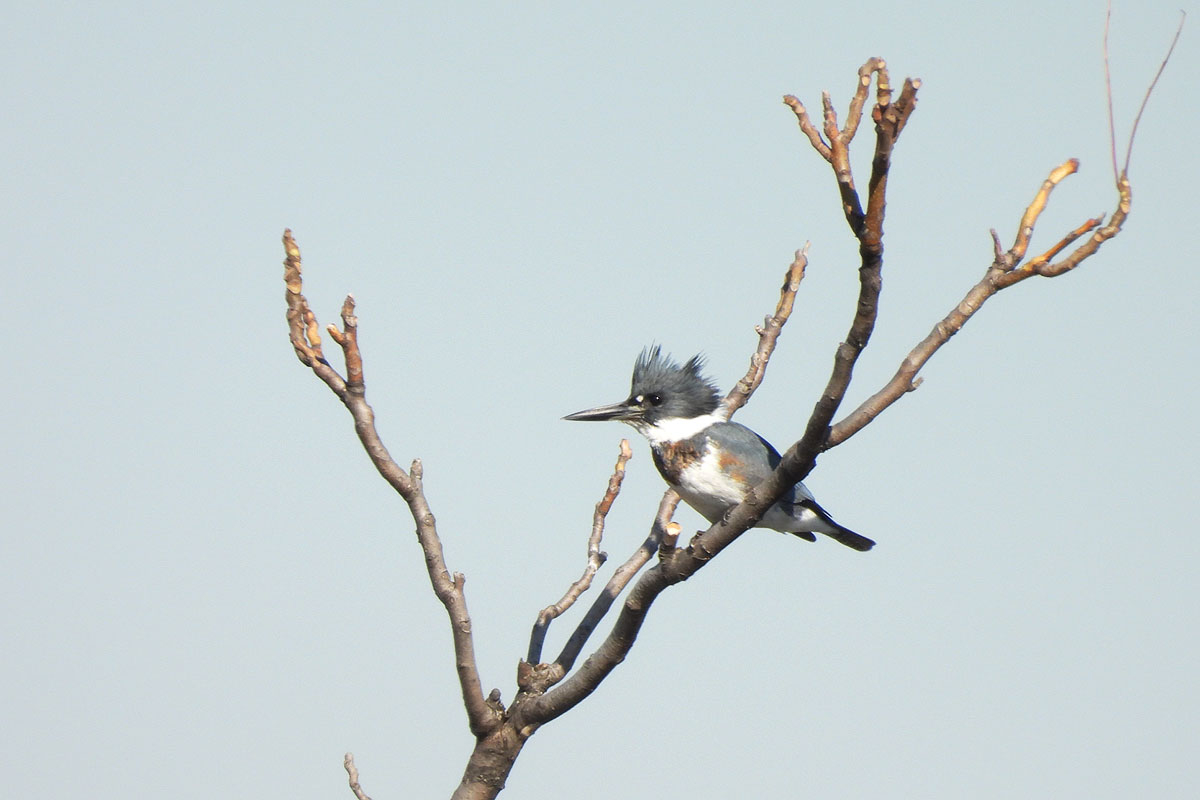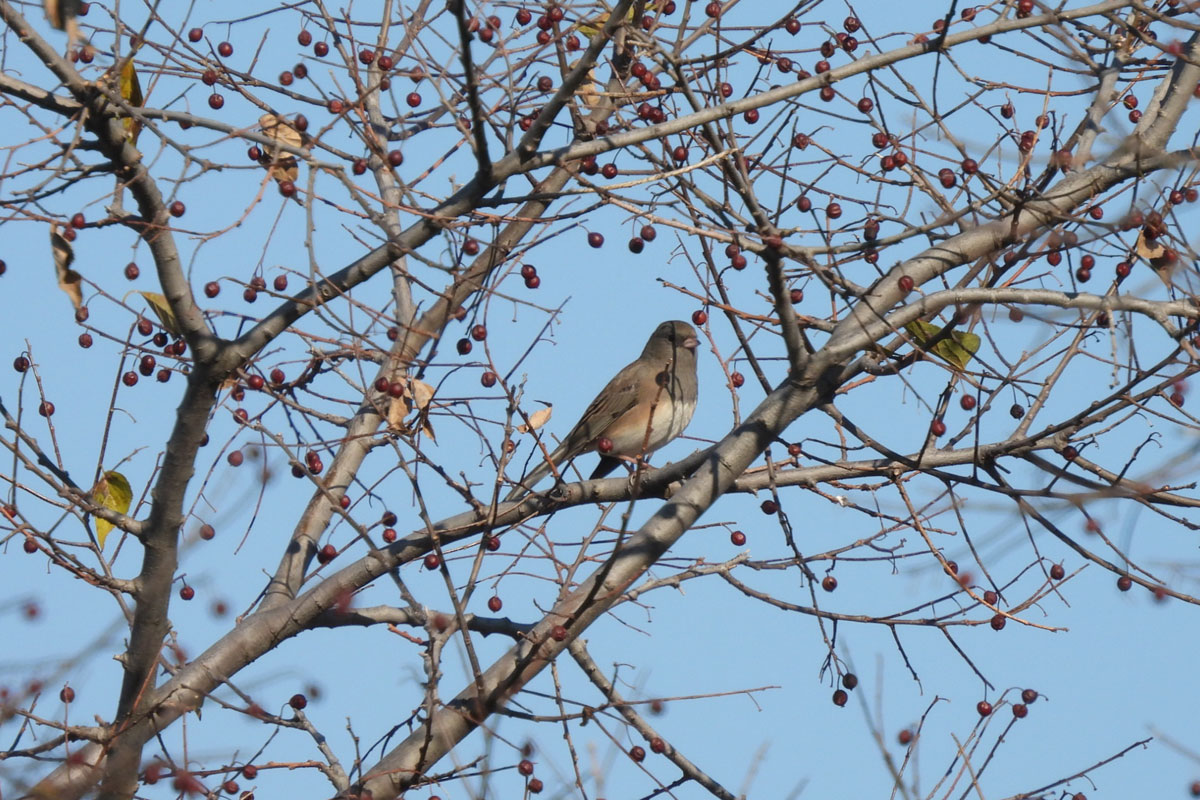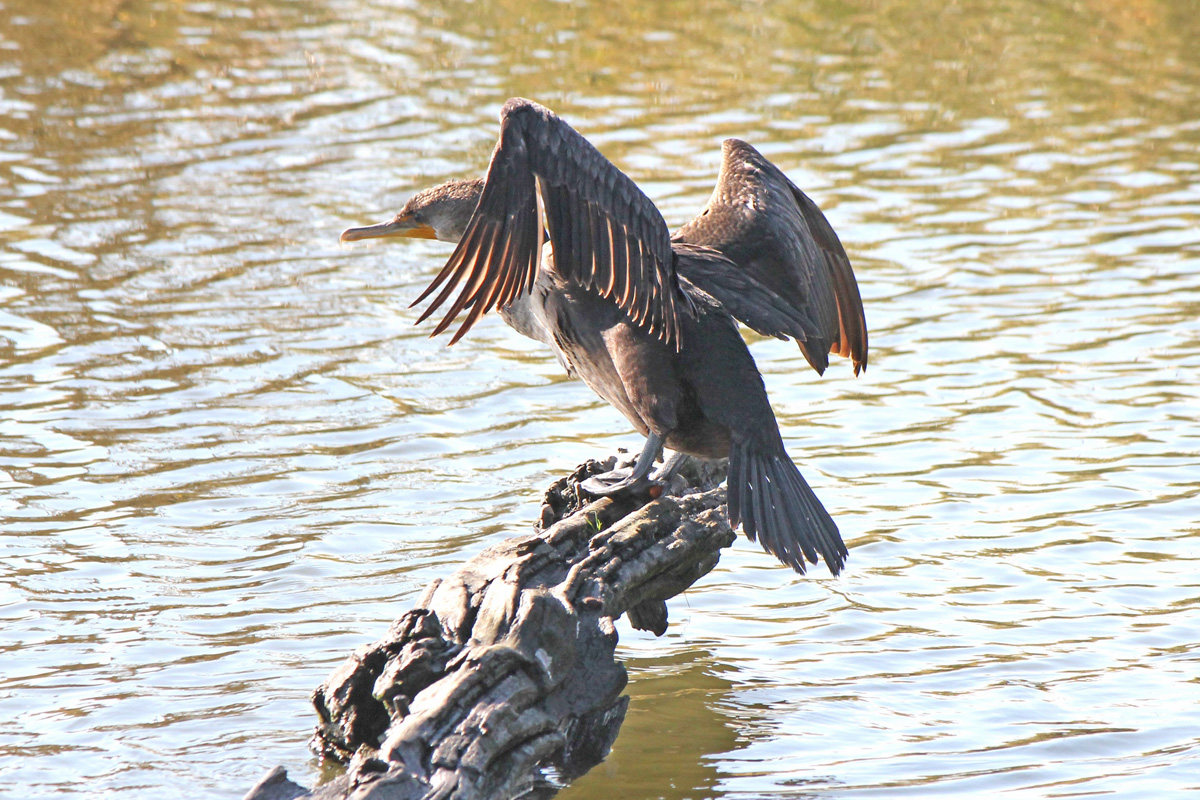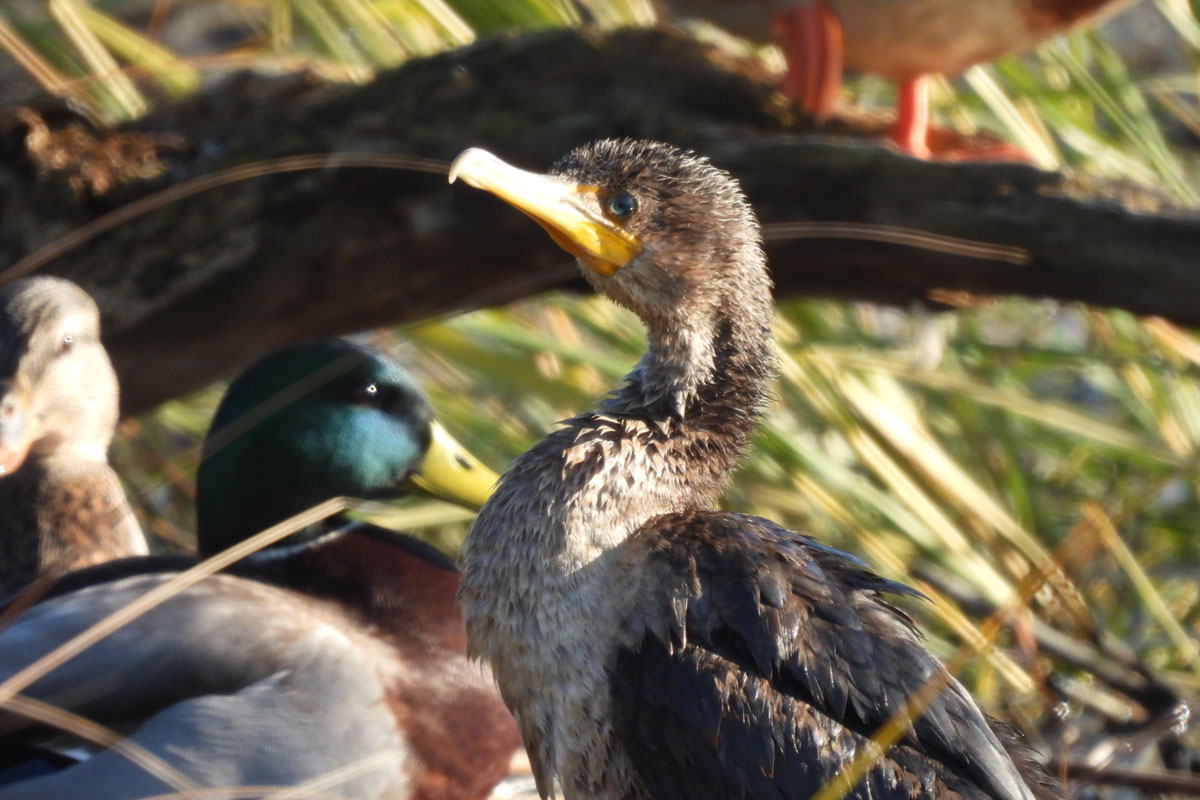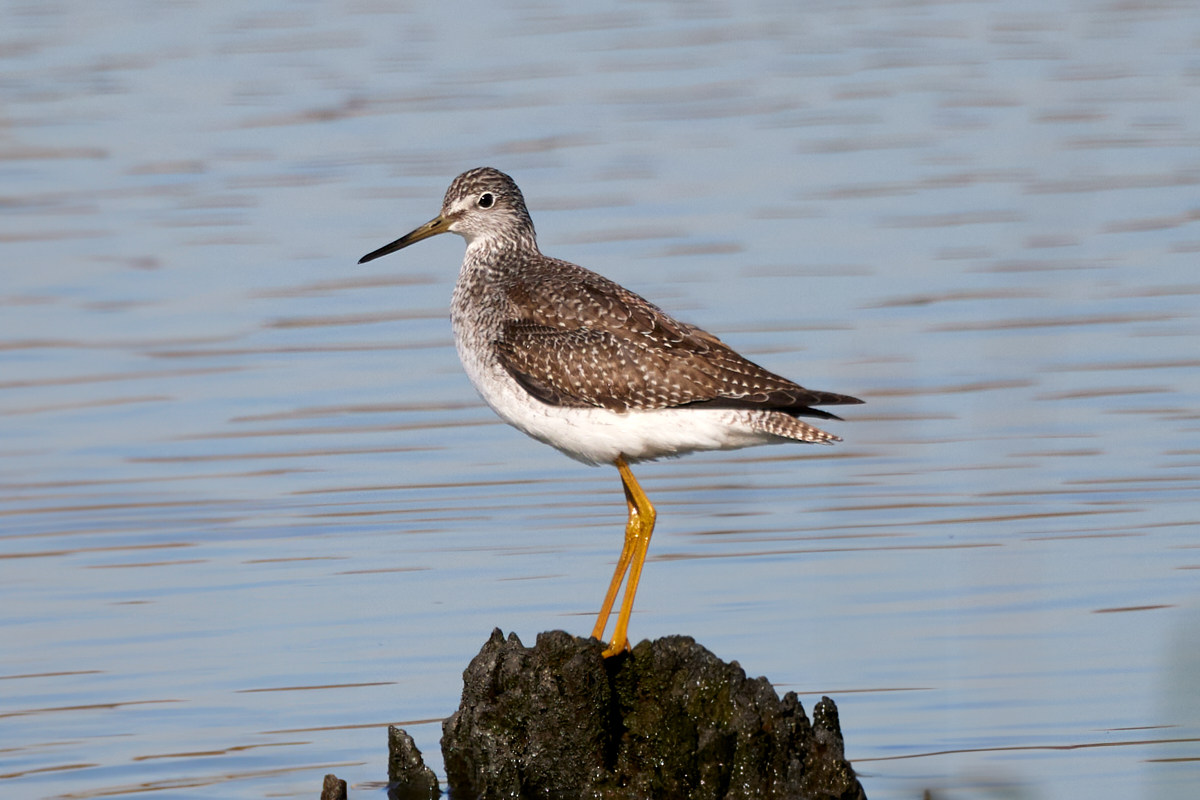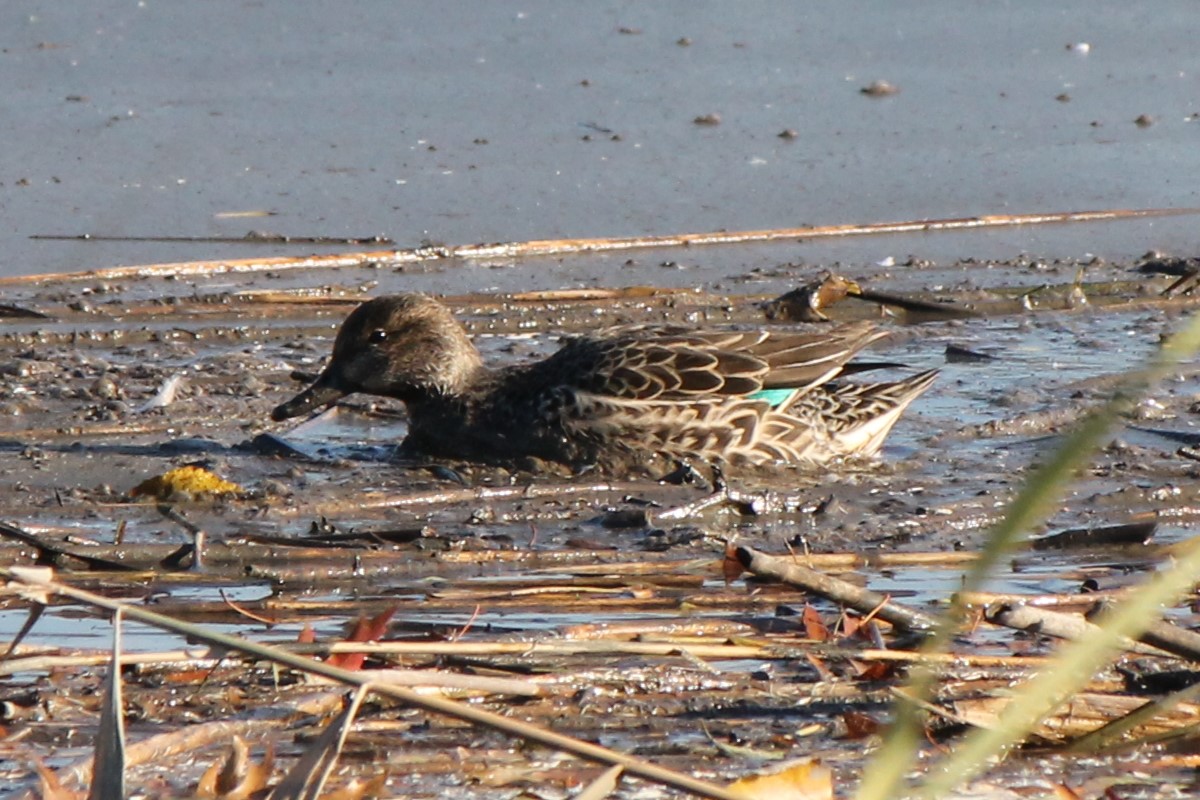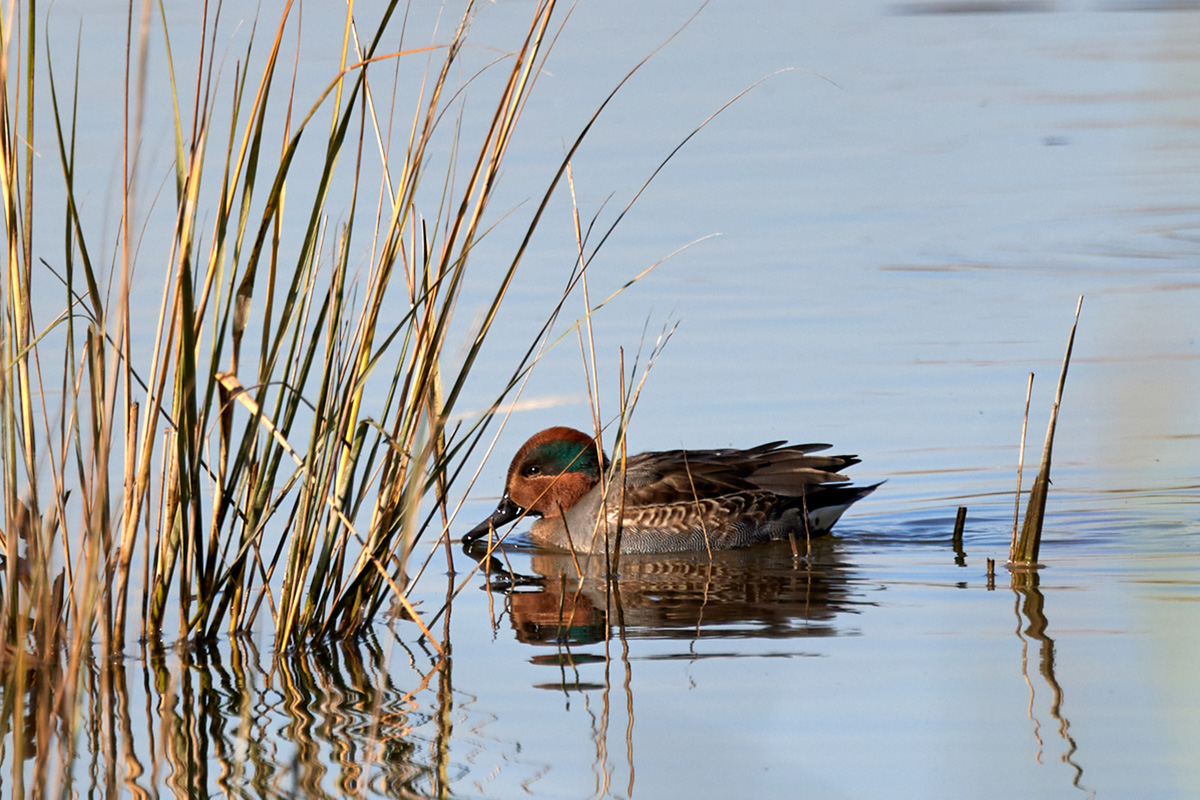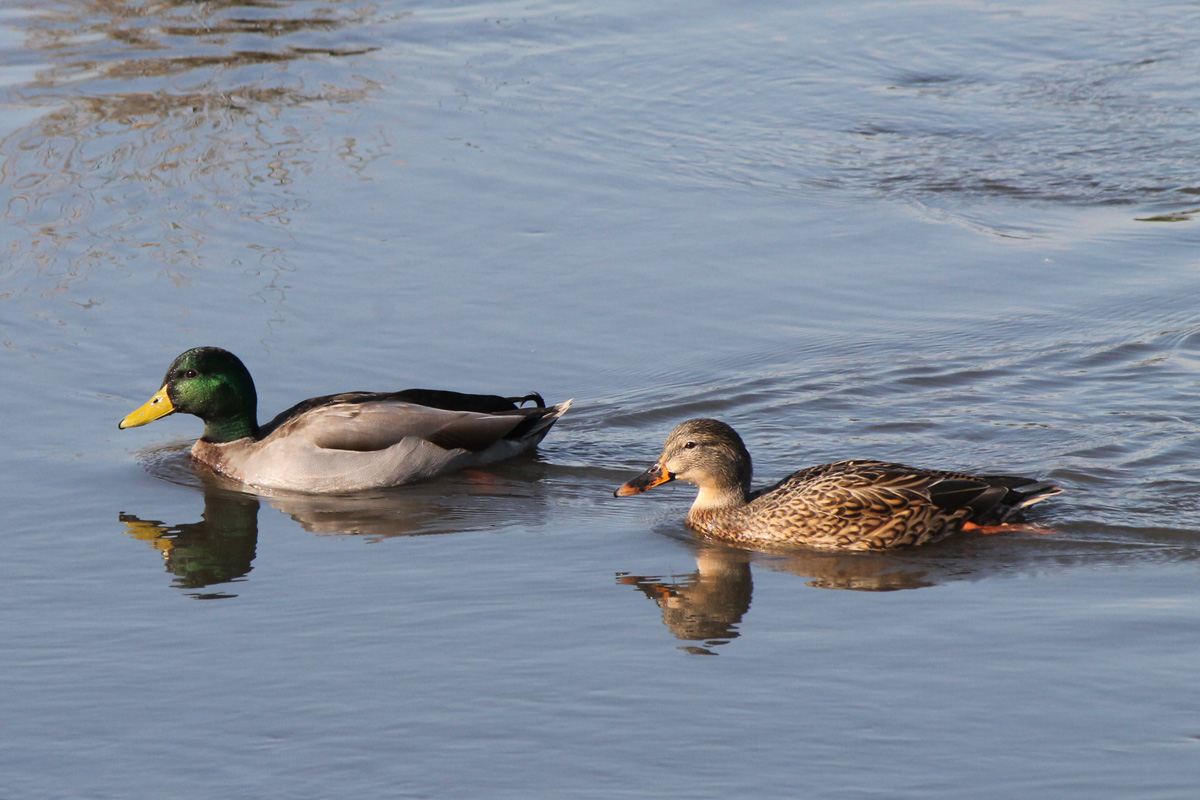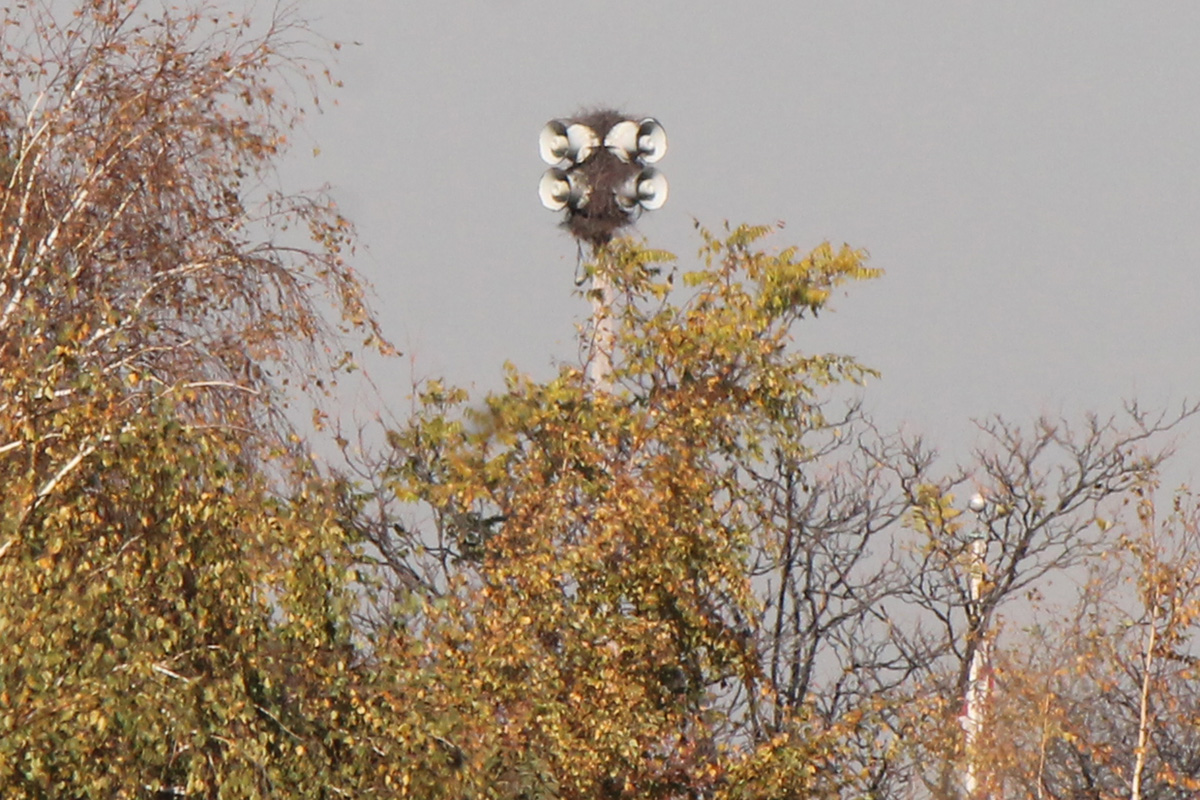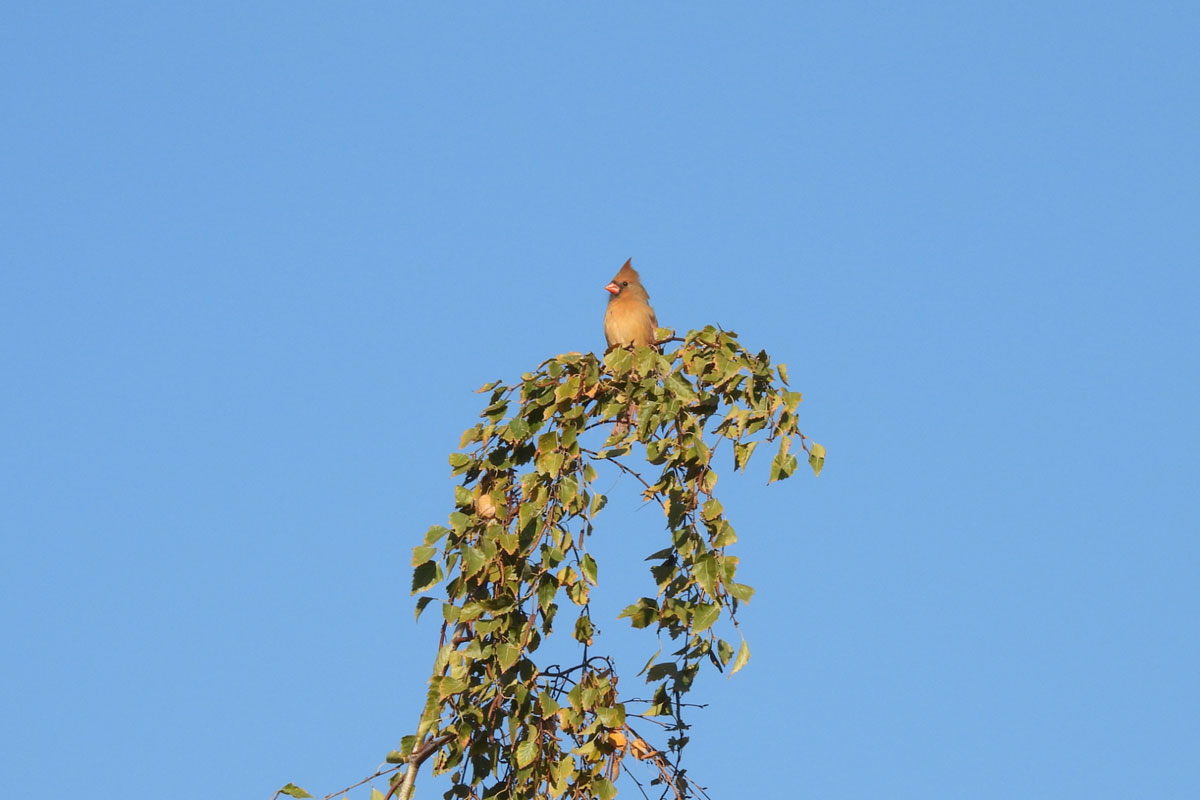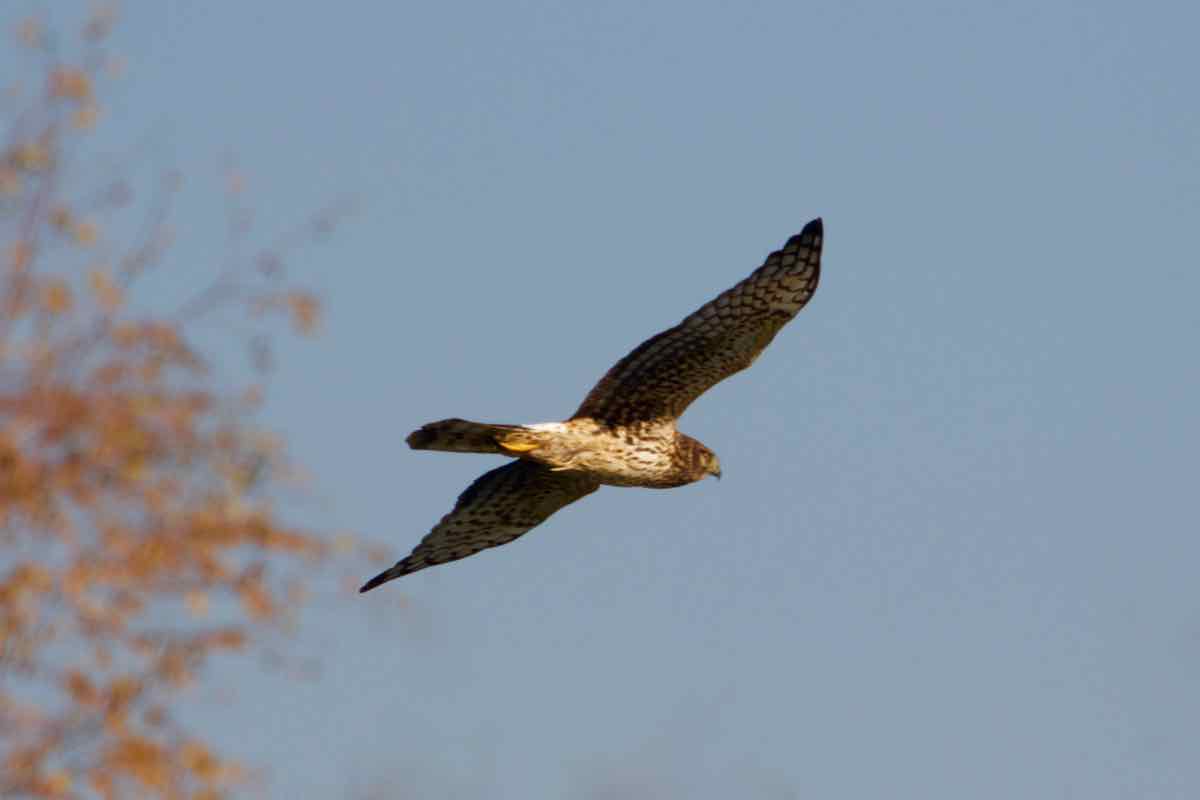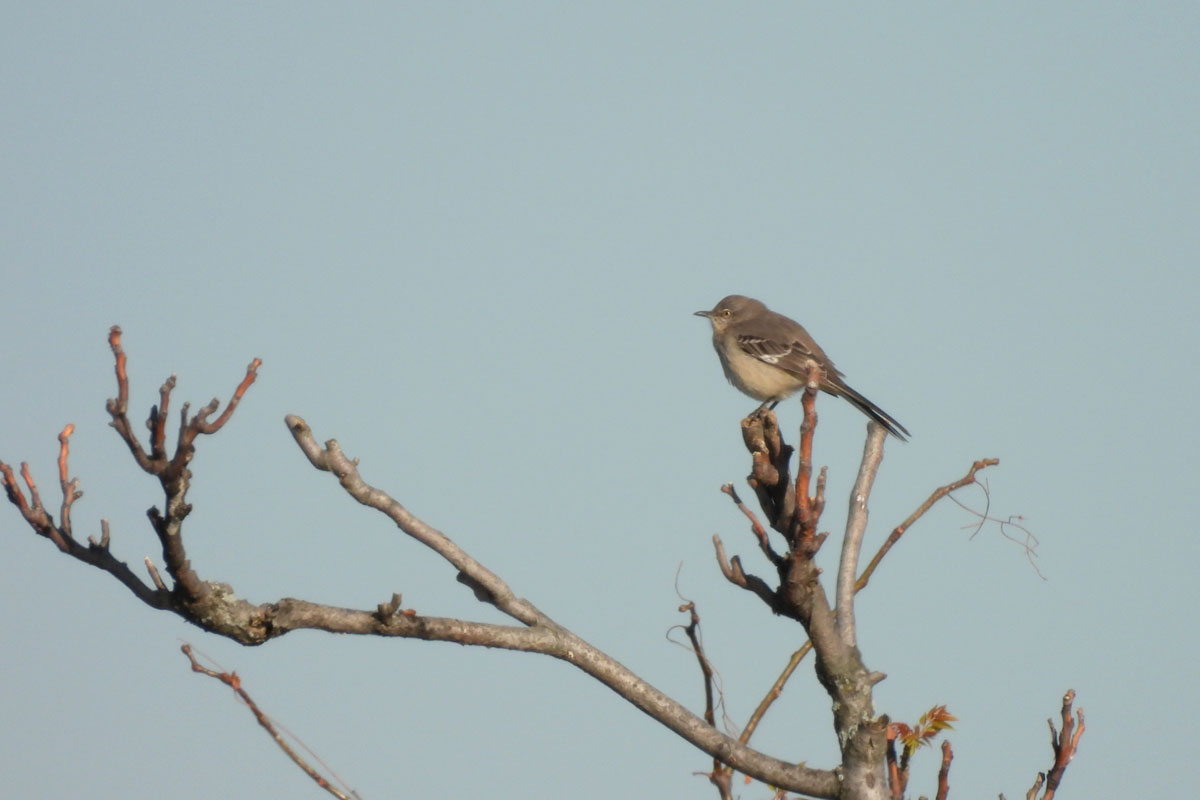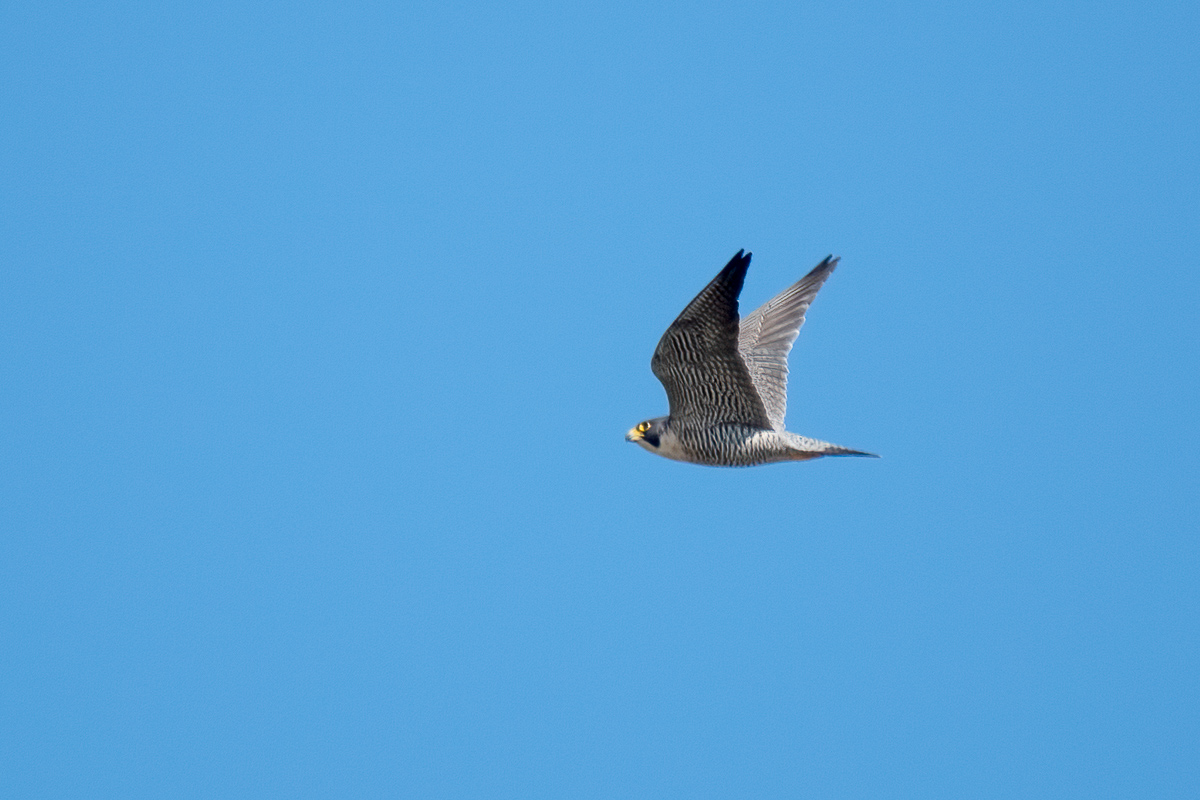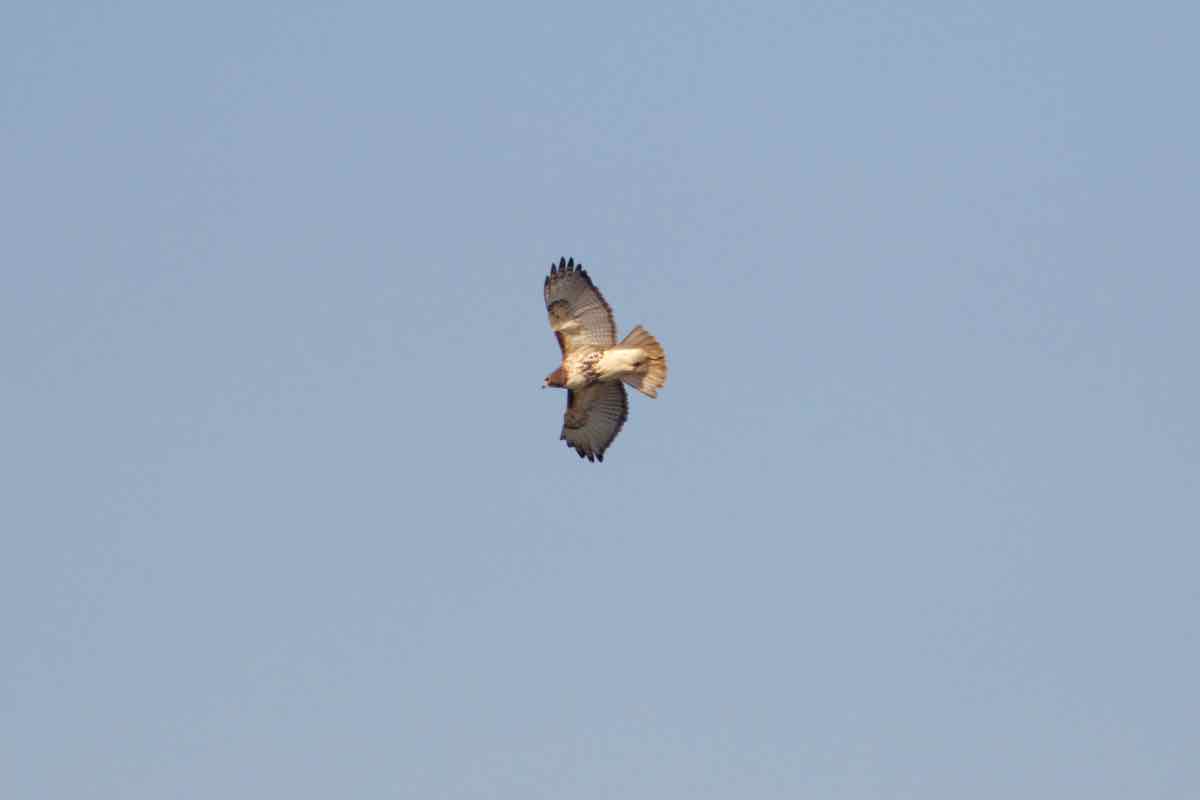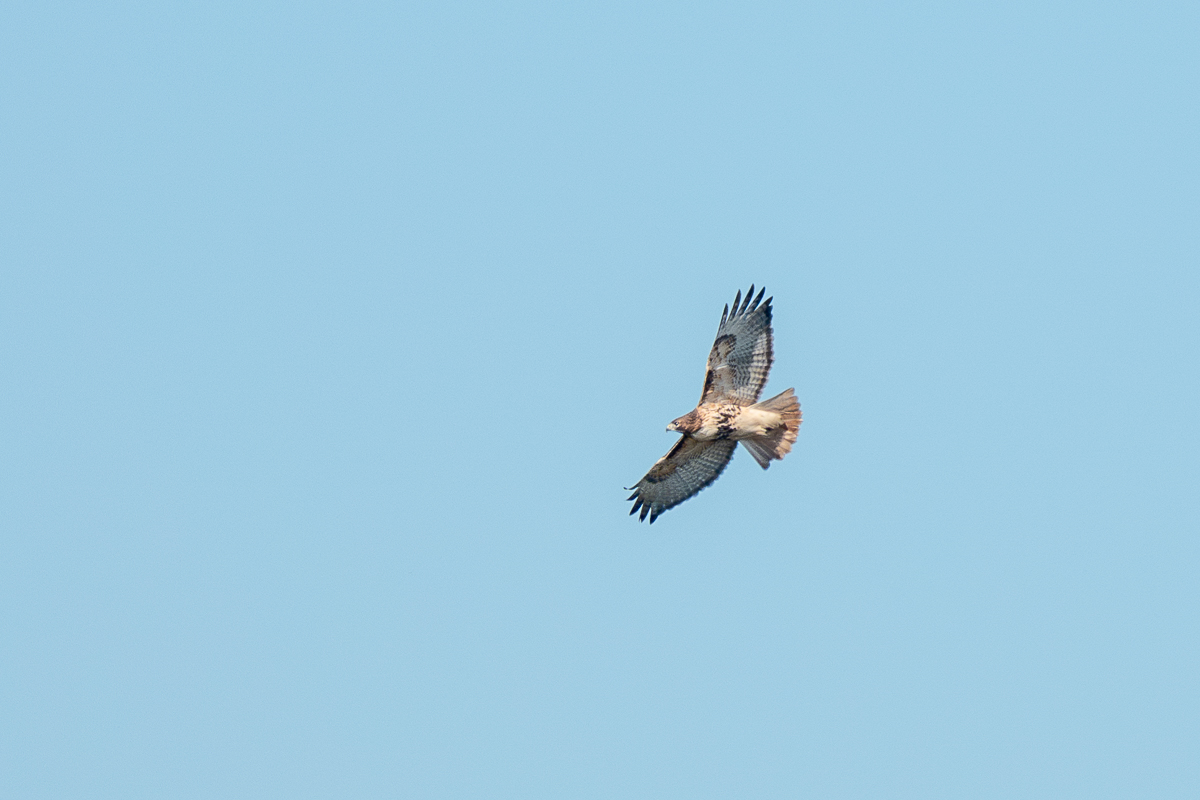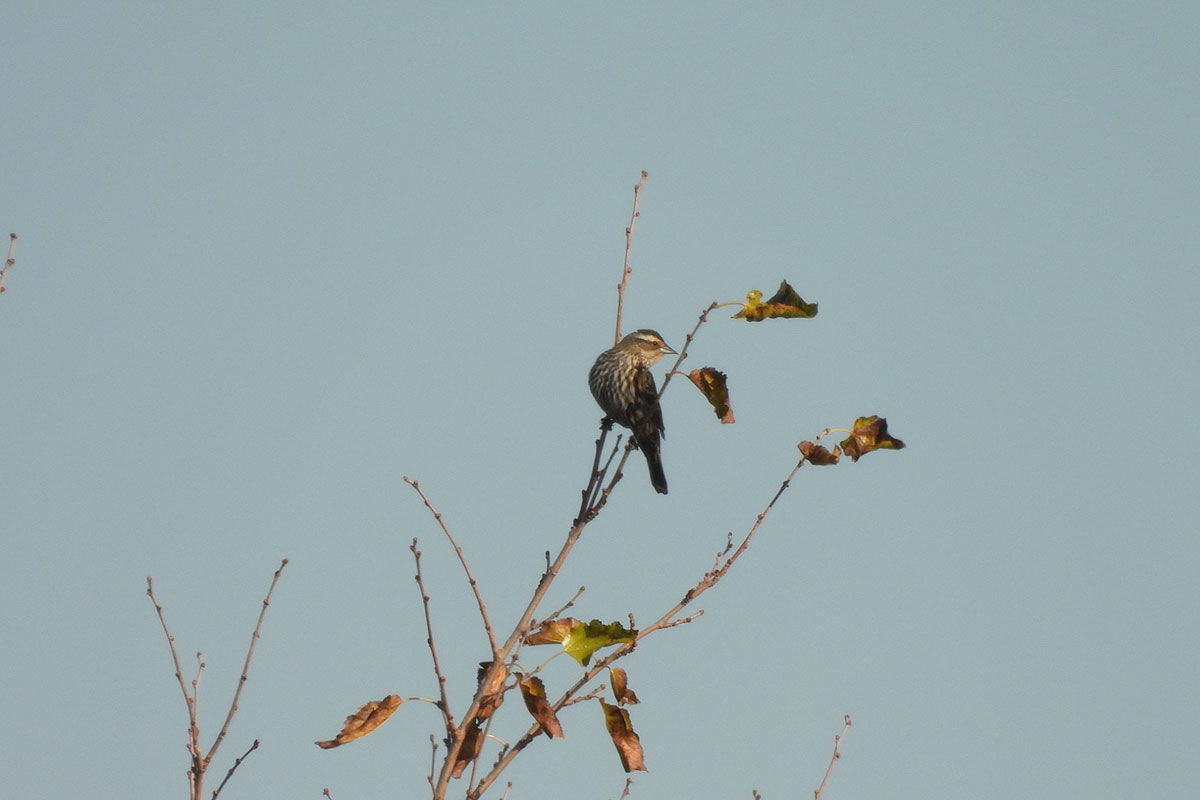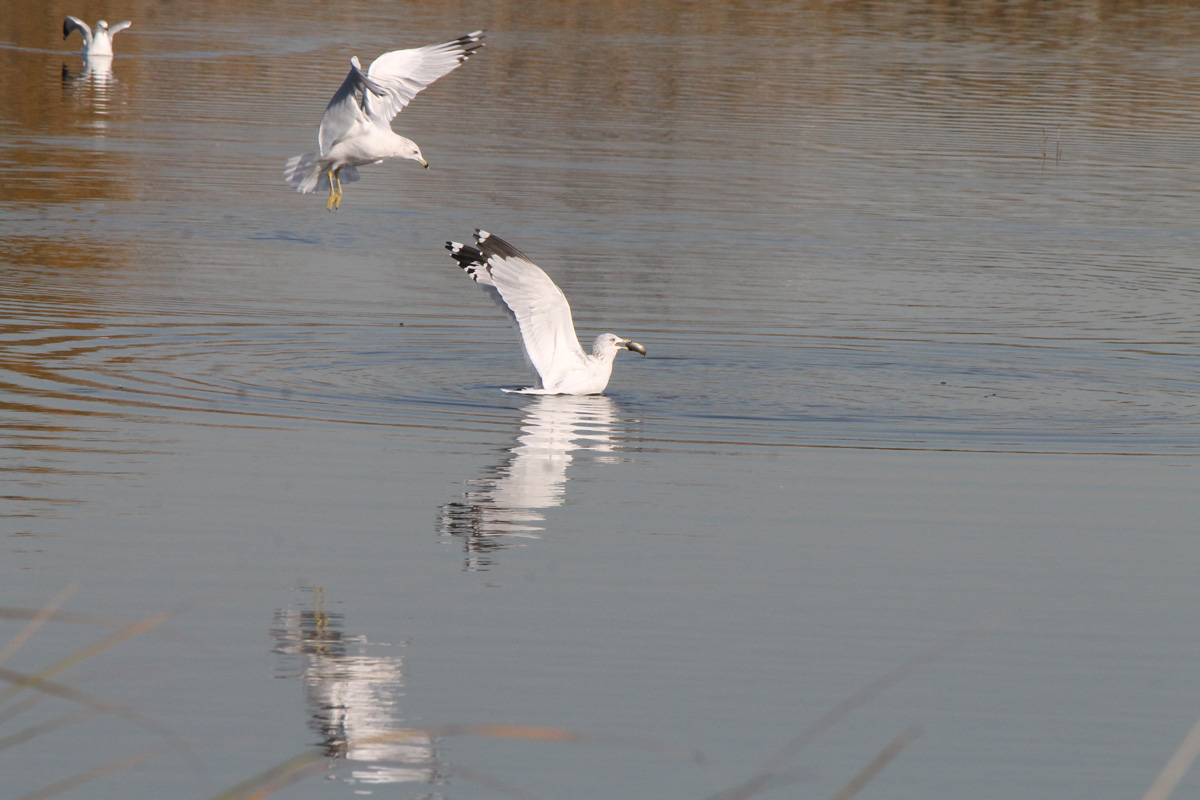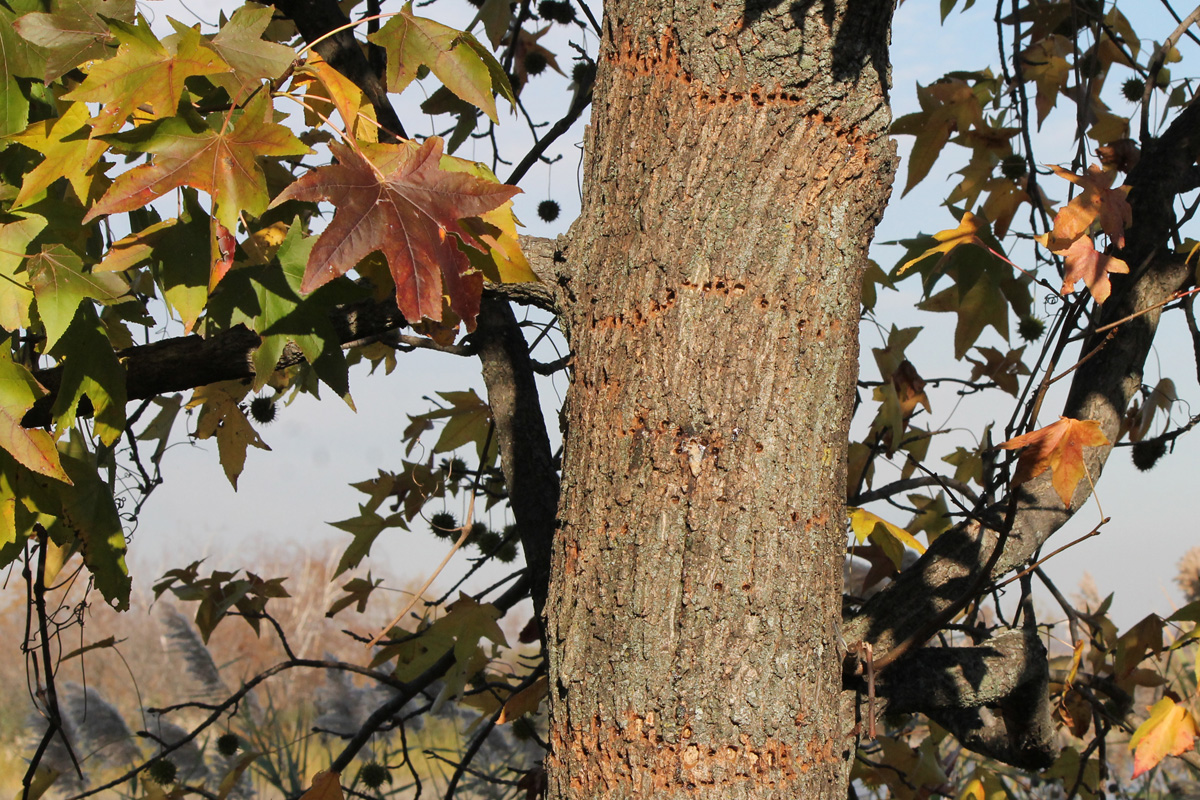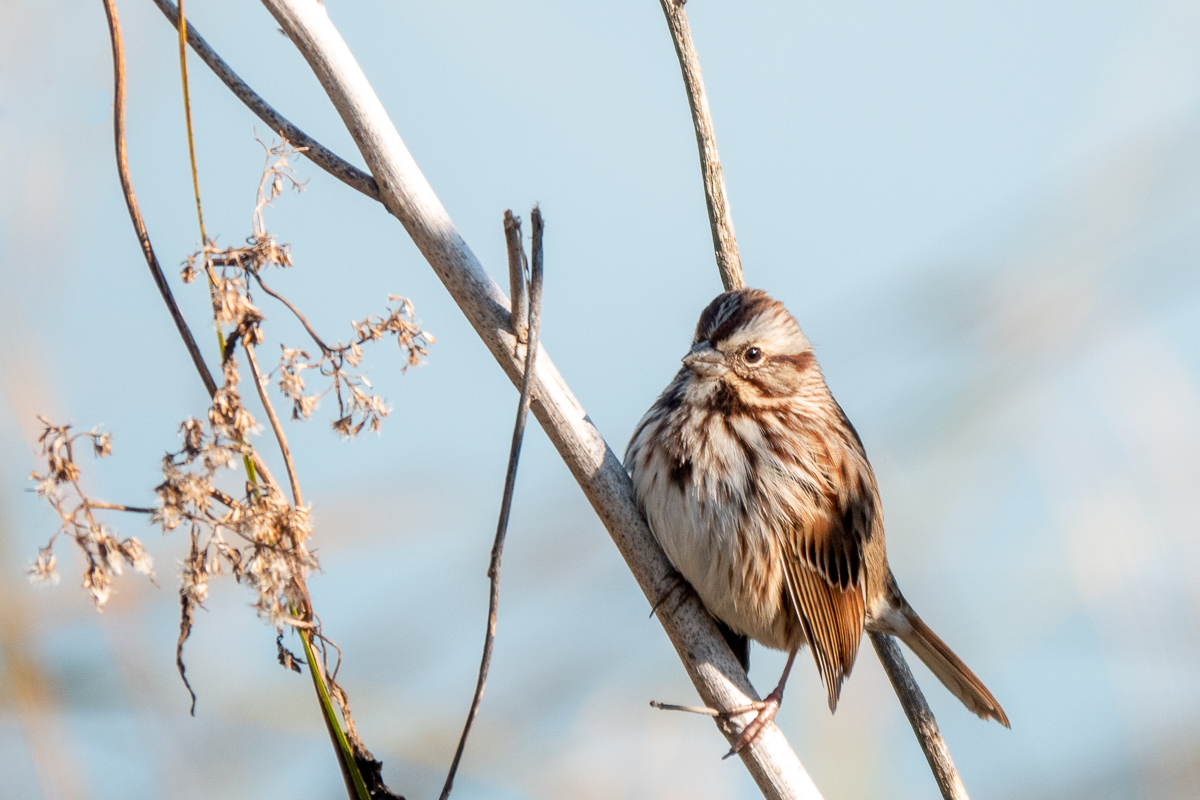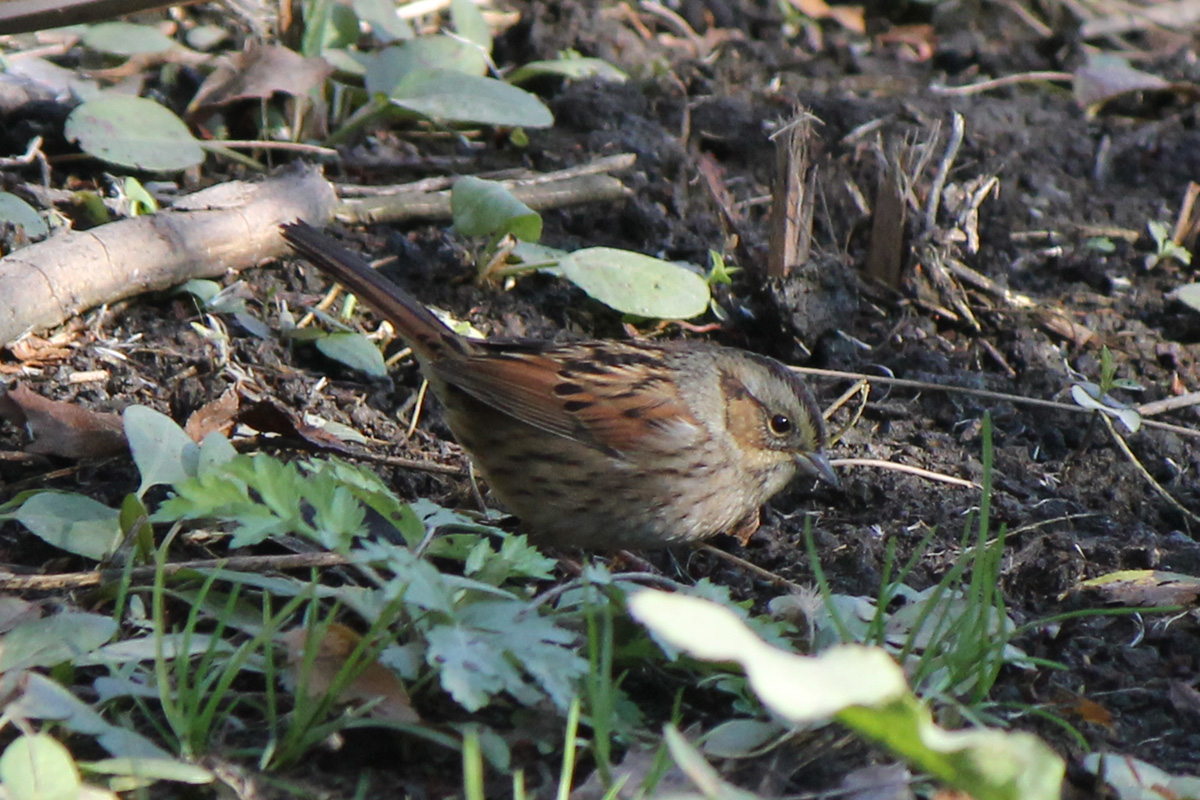Registrar: Lisa Kroop
Participants: 16
Weather: 36°F – 46°F, sunny, blue skies, no clouds, calm north wind 2 mph
Bird Species: 37 + 2 other taxa
Our walk, postponed from mid-October in the midst of fall migration because of rain, had now brought us to the beginning signs of winter. The Tree Swallows and Chimney Swifts were gone, as well as the transient clusters of migrating birds. Hooded Mergansers were back, joining the large numbers of Green-winged Teal; White-throated Sparrows were spotted and heard singing from the dense vegetation along the trail, and many of the trees and bushes were starting to look bare.
The tide was high on the morning of our walk; the mud flats in the impoundments were gone, and only a few of the remnant stumps of the vanished Atlantic white cedar forest remained barely visible, poking through the surface of the water. Ducks were swimming and dozing along the edges; along with the many Green-winged Teal and Mallards was a group of eight American Black Ducks and a trio of Hooded Mergansers. Many Ring-billed Gulls were floating on the water, and we compared them to the few Herring Gulls that were present. Along the trails Song Sparrows were in abundance, as were quite a few Northern Mockingbirds and Northern Cardinals. Flocks of European Starlings flew by as well as groups of Red-winged Blackbirds, a few of which landed in the nearby trees and included a couple of females.
As the morning warmed we began to see raptors. A Northern Harrier flying away from us allowed us to study its wing beats, and a circling Cooper’s Hawk gave us views of all its angles. Then, as we were starting to loop back, Rick spotted a very large accipiter standing along the path ahead of us. It was instantly spooked and flew off through the trees. We tried to find this tantalizing bird again, and Rick got a second glimpse of it flying along the impoundment-side of the wooded edge, but alas – there was not enough to identify it beyond “Cooper’s Hawk/American Goshawk.”
Just as we were reaching the end of our walk, we paused to observe a Belted Kingfisher perched over the north impoundment. The kingfisher flew off and suddenly a large bird darted in front of us from the left: a Peregrine Falcon, whipping its wings, turning eastward in the direction of the New Jersey Turnpike. And once the Peregrine was gone, the Belted Kingfisher returned to its original perch – a performance that was quite a finale.
Many thanks to Rick for leading us through Mill Creek Marsh and sharing his knowledge about it and the birds that we saw.
Species Lists
Birds
Canada Goose
Mallard
American Black Duck
Green-winged Teal
Hooded Merganser
Rock Pigeon
Mourning Dove
Ring-billed Gull
Herring Gull
Double-crested Cormorant
Greater Yellowlegs
Great Blue Heron
Northern Harrier
Cooper’s Hawk
Cooper’s Hawk/American Goshawk
Red-tailed Hawk
Belted Kingfisher
Red-bellied Woodpecker
Downy Woodpecker
Northern Flicker
Peregrine Falcon
Blue Jay
crow sp.
European Starling
Northern Mockingbird
Hermit Thrush
American Robin
House Sparrow
House Finch
Purple Finch
American Goldfinch
Dark-eyed Junco
White-throated Sparrow
Song Sparrow
Swamp Sparrow
Red-winged Blackbird
Common Grackle
Yellow-rumped Warbler
Northern Cardinal
